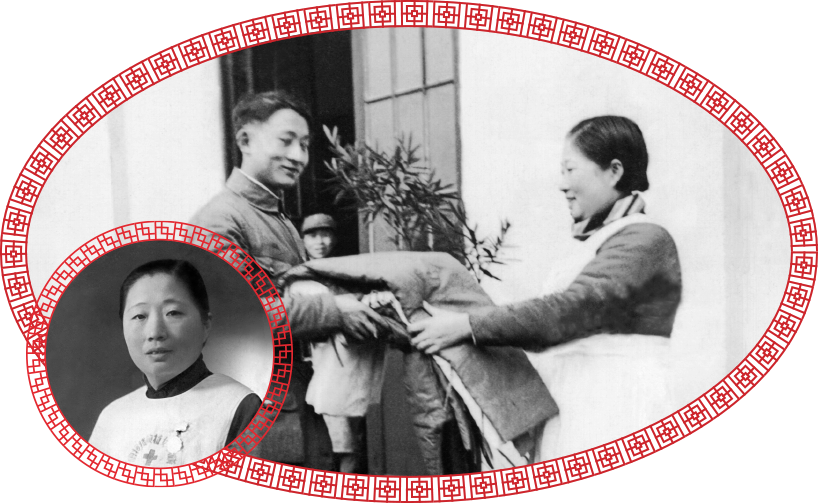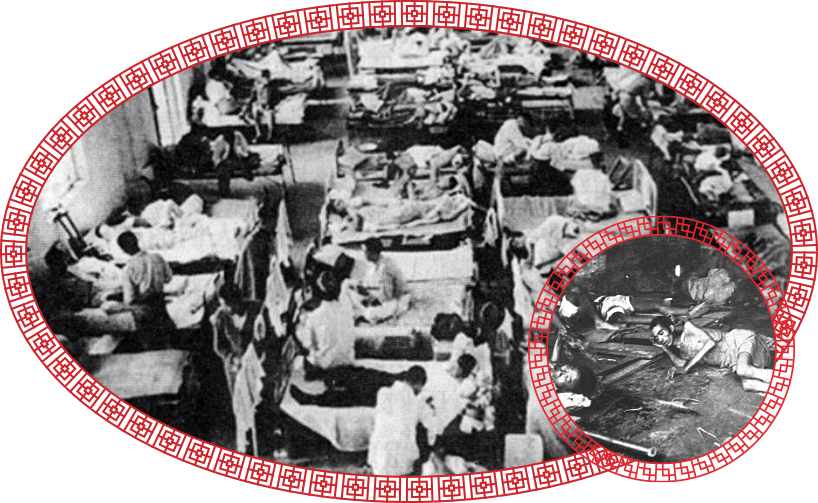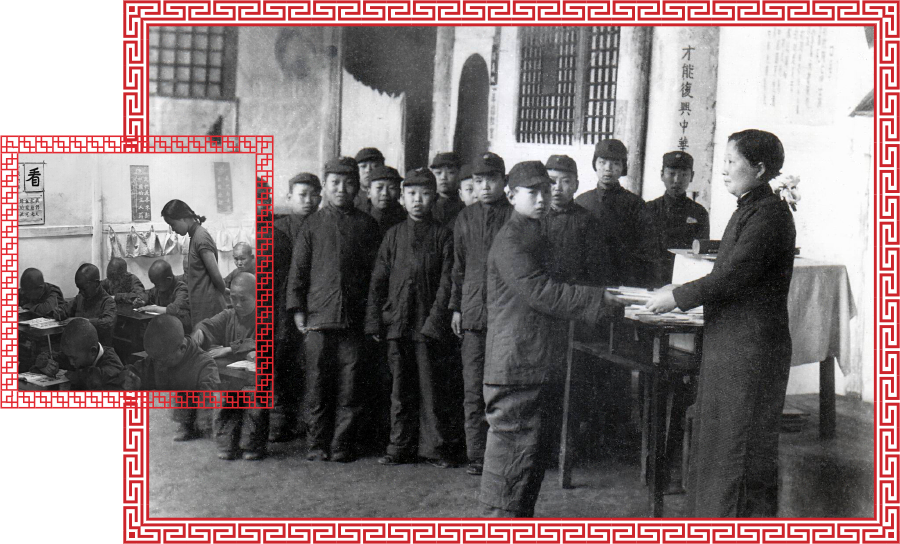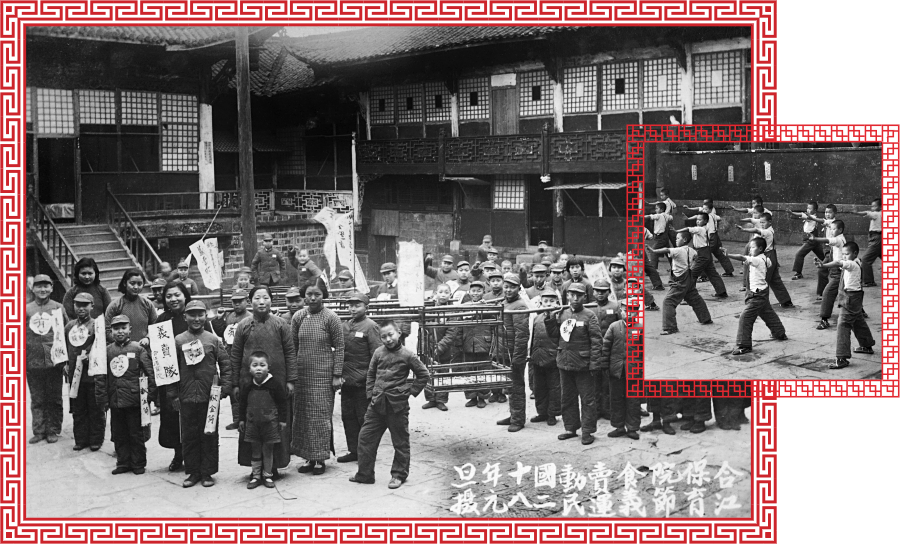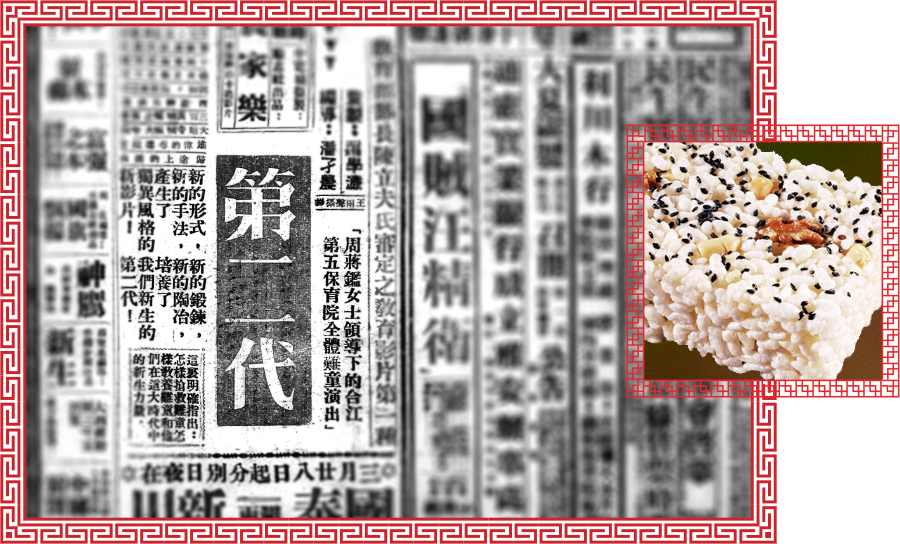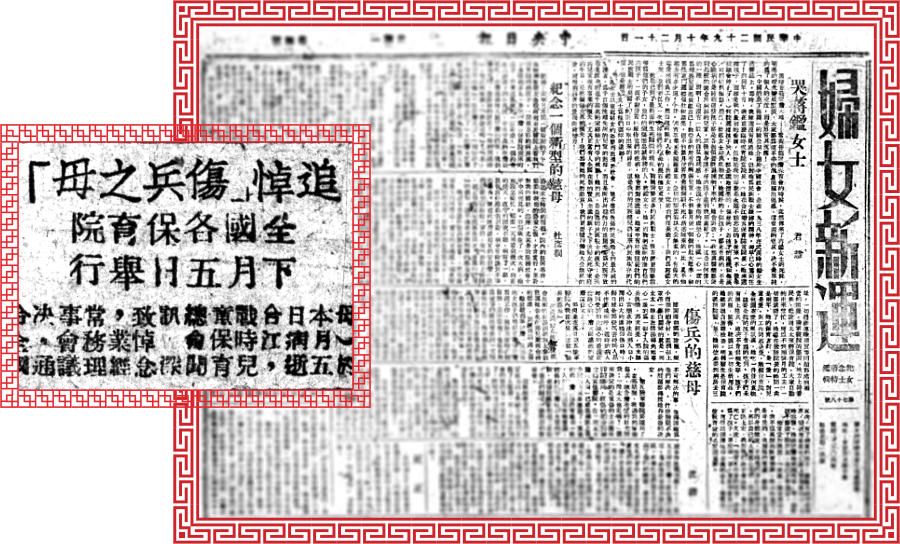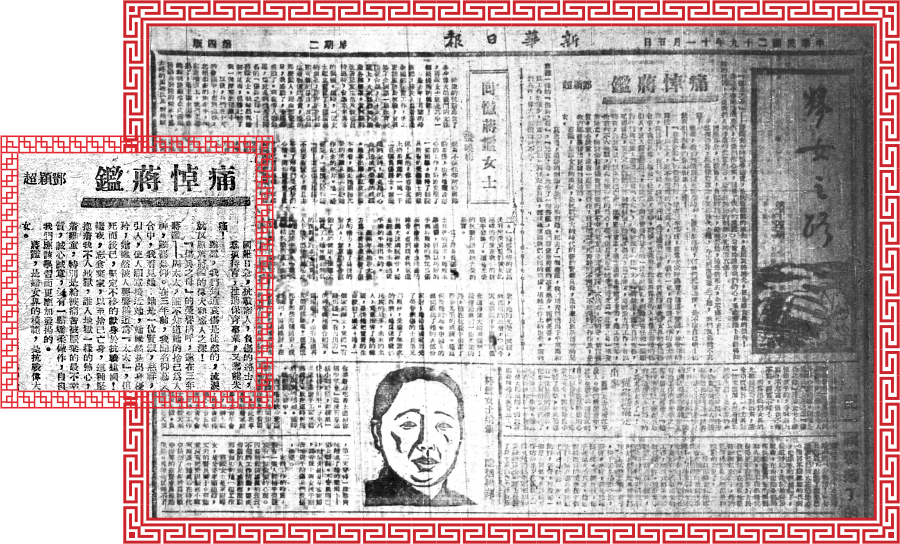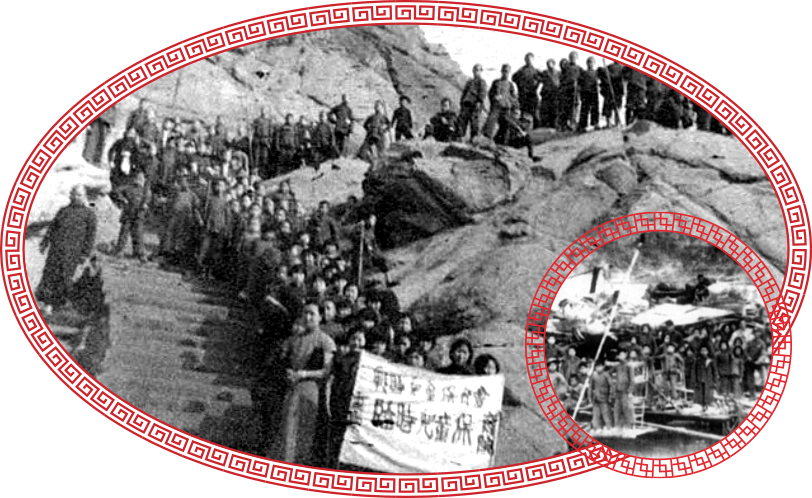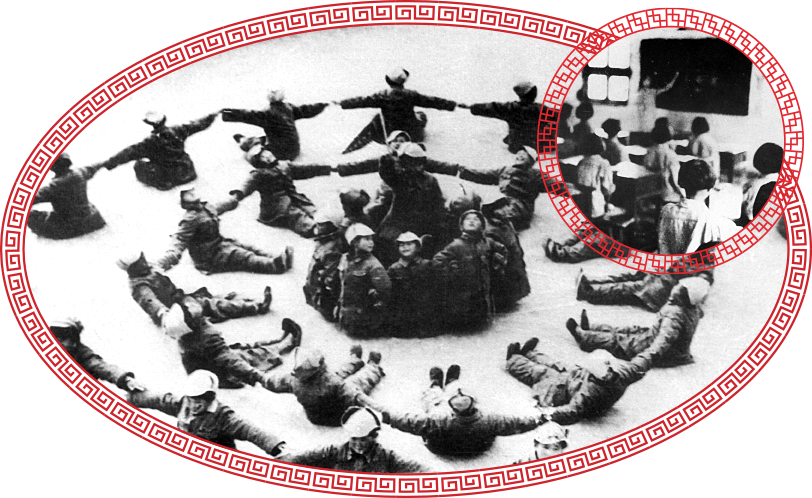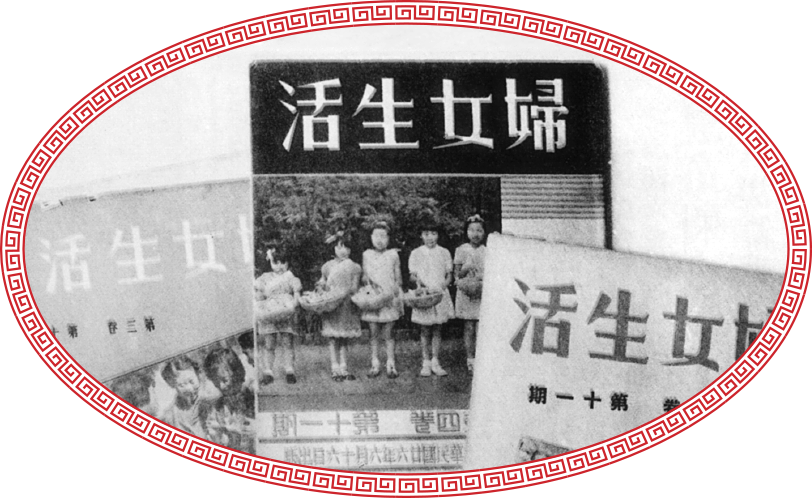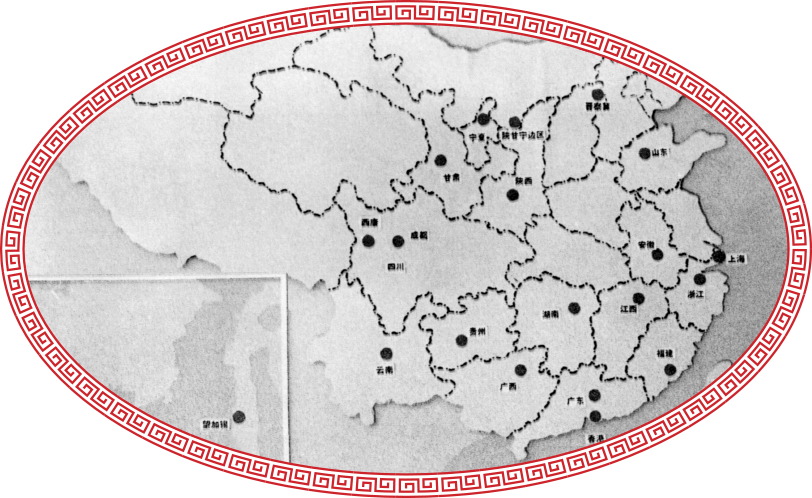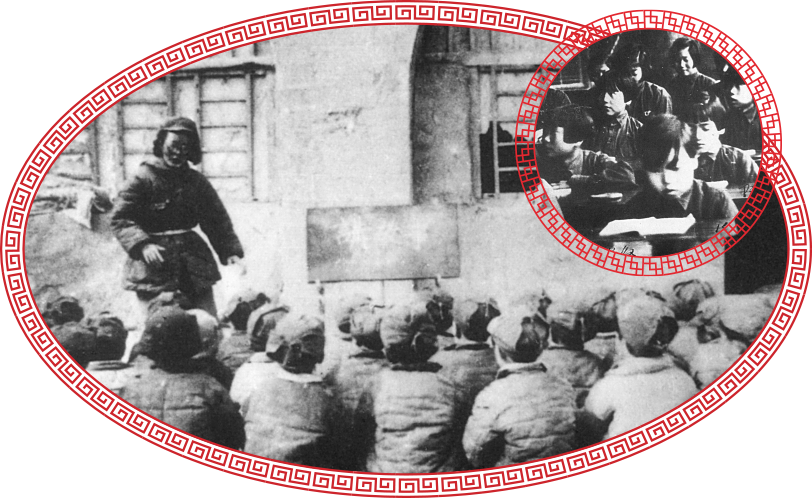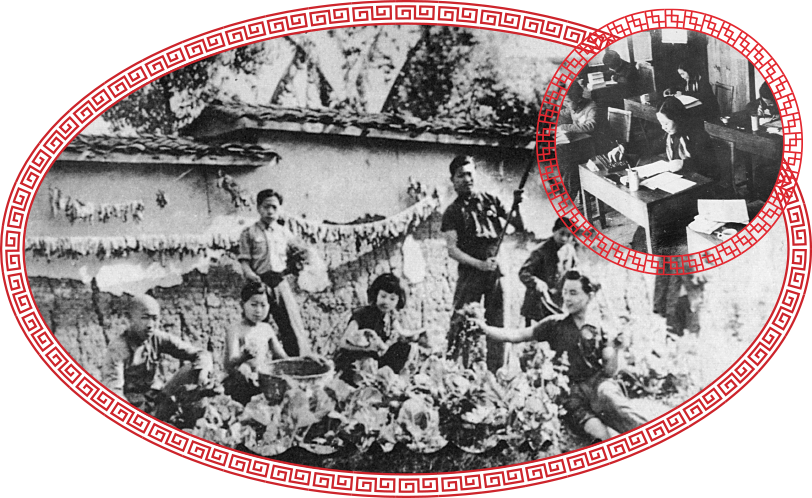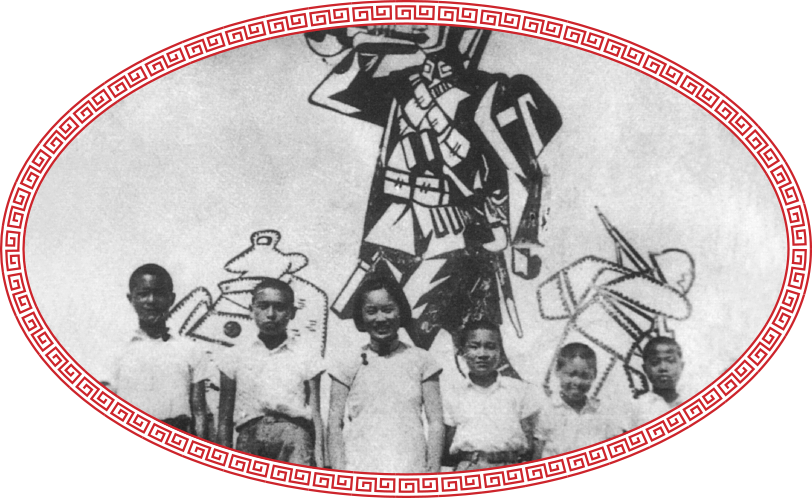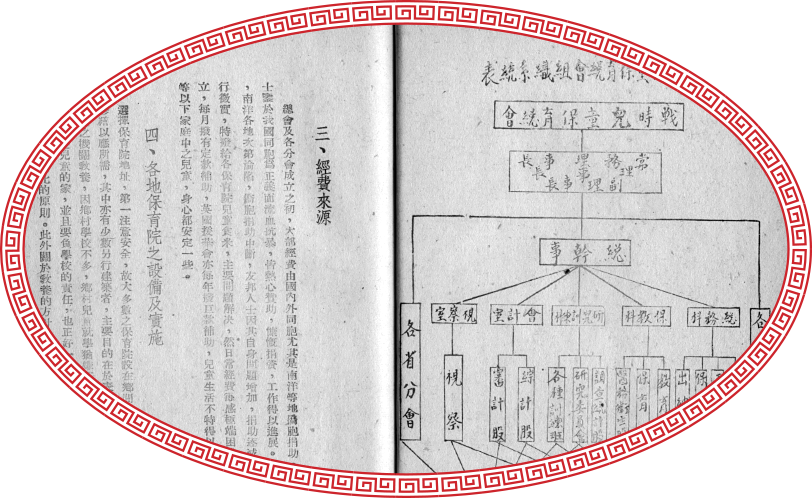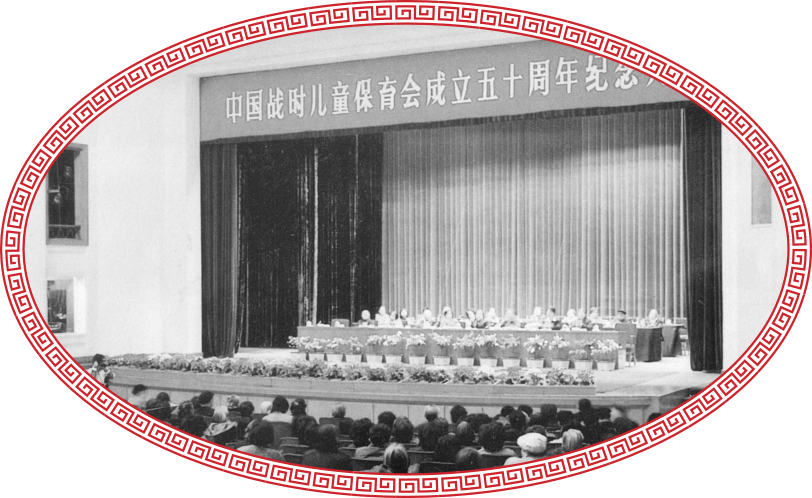-
Mother of Wounded Warriors
Mother of Refugee ChildrenThe Chinese Nightingale
THE LIFE OF AN EXTRAORDINARY WOMAN
A Nurse, Educator, Activist, and Philanthropist in the Chinese Women’s Movement During WWII“For the dead and the living, we must bear witness.”
— Elie Wiesel -

-
The Life Story
During the Second Sino-Japanese War (1937-1945) ⇱, Ms. Jiang Jian gave up her comfortable and affluent life to become a nurse, educator, activist, and philanthropist. She volunteered to serve the wounded warriors in military hospitals and established a refugee school for children. In addition to actively engaging in community development and charity programs, she set up and organized a local Women's Association. After years of assiduous work, at age 38, she dedicated her life entirely to the wounded warriors and refugee children. People regarded her as the "Mother of Wounded Warriors," "Mother of Refugee Children," and "The Chinese Nightingale ⇱."
- Early Life
- Memoir 1937-1940
- Will and Death
- Memorial
-
-
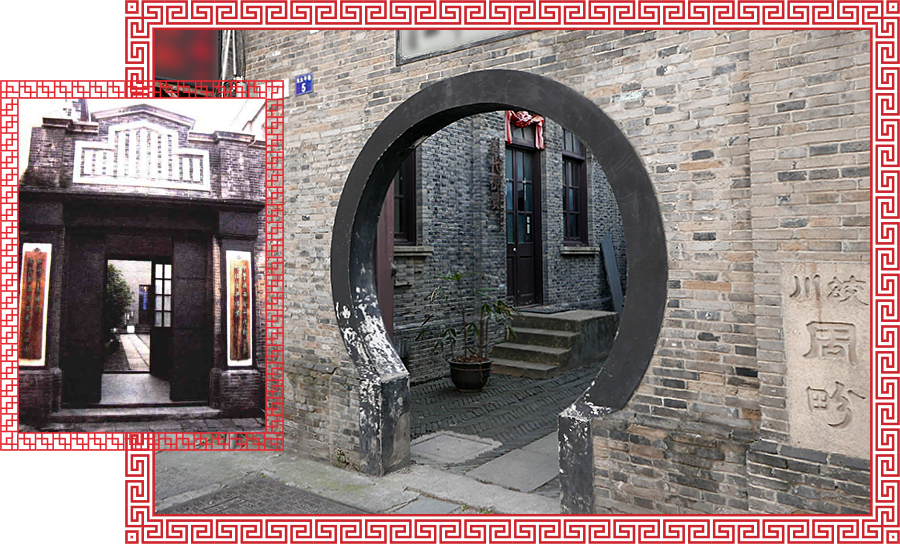
Jiang Jian's Wedding Photo and Former Residence (photo taken in 2018)
Address: 3–5 East Taiping Lane, Hangzhou, China
Ms. Jiang was born the same year when Florence Nightingale: The Wounded Soldiers Friend was first published in London in 1902. Through many generations, the Jiang family has been a respectable member of the Baiquan Township in the Dinghai Distinct located in the coastal area of Zhejiang province, where they flourished and prospered in wealth and knowledge by the East China Sea. As the eldest daughter of Sir Jiang Changchi, Jian's parents passed away when she was five. Her maternal uncle Mr. Wang Qiyu brought her up in his affluent home in Shanghai. Mr. Wang was a famous textile entrepreneur and philanthropist in modern China. Furthermore, the statesman and ambassador of the Republic of China, Mr. Gu Weijun (Wellington Koo) was her distant uncle. At age 14, Ms. Jiang graduated from Shanghai Biwen Women's School. Four years later, she married Chou Mingdong (1898-1982), a medical student at Tongji University in Shanghai who later became a renowned pediatrician. Dr. Chou’s grandfather, Mr. Chou Weiqiao, was a business tycoon in Shanghai. Mrs. Chou adopted her husband’s family name and changed hers to Chou Jiang Jian. The couple was deeply in love, although they didn't have biological children. In 1921, Mr. Chou graduated from Tongji, then studied in Germany and received his Ph.D. in Medicine. Afterwards, Dr. Chou opened offices in Hangzhou and Hankou. -
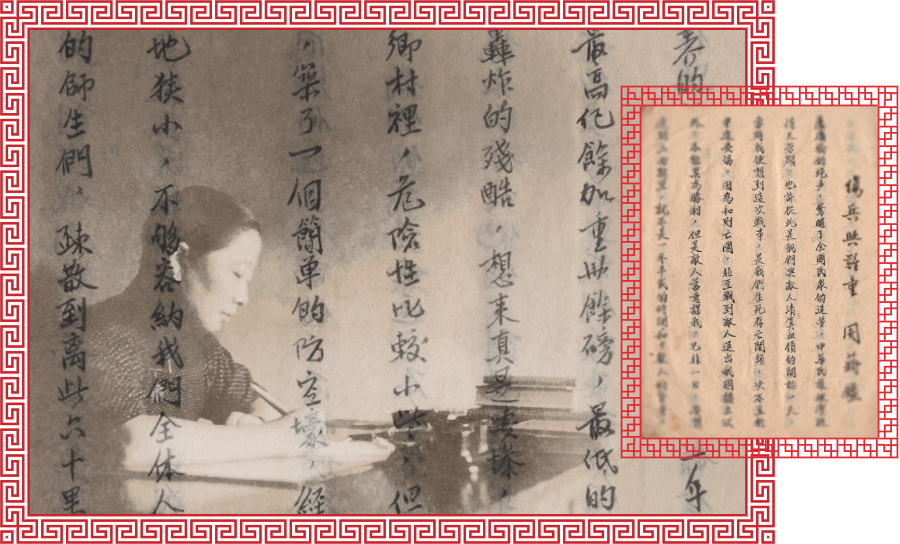
Jiang Jian's Memoir 1937-1940
«The Wounded Warriors and Refugee Children»
In the last three years of her life, when China began a full-scale resistance to the expansion of Japanese influence in its territory after the War broke out in 1937, Ms. Jiang’s astonishing transformation—from a wealthy housewife to a voluntary nurse, headmaster, activist, and philanthropist—was not a mere coincidence. In the times of calamity and repression, when loyalty, passion, and courage join the quest for the good, a hero or heroine is born. Behind Jian’s intrinsic kindliness and unwavering perseverance stood resolutely her beloved husband, Dr. Chou, who also held unflinching devotion to their country and people undergoing immense suffering and adversity.
Sometime between 1939 and 1940, «Guo Xun» magazine, directed by Mr. Huang Yanpei, invited Ms. Jiang to write an article and share her experiences of becoming a volunteer nurse and educator. However, Jiang Jian’s manuscript The Wounded Warriors and Refugee Children, which recorded the details of her work completed during the war, didn’t reach the magazine due to her unexpected illness and death in 1940. Against many obstacles and risks, Dr. Chou and his family as of today have carefully kept her manuscript intact for eight decades. Some of these extraordinary stories can be found on the Warriors and Children pages of this website. -
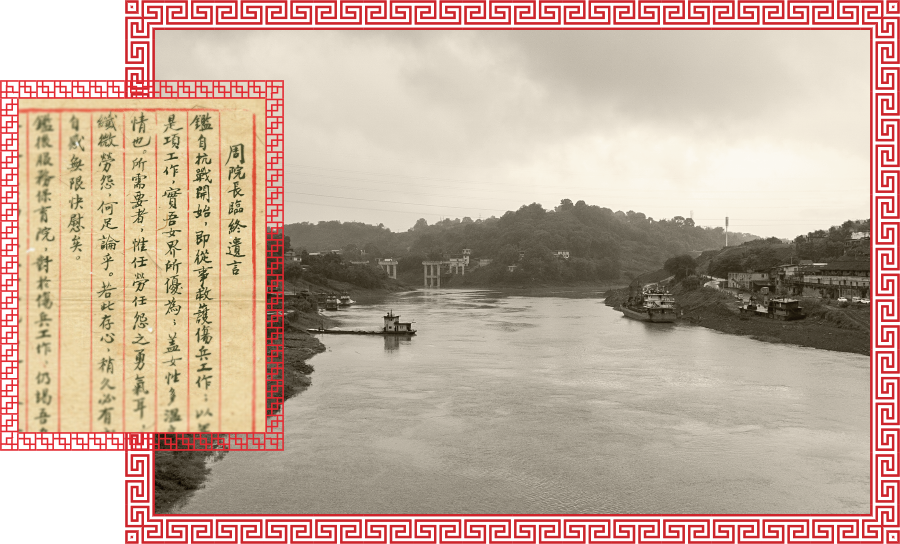
Large: Hejiang Where Ms. Jiang Passed Away (photo taken in 2018)
Small: The Dictation of Jiang Jian's Will 1940
It was for the refugee children and wounded warriors that Ms. Jiang volunteered years of hard work with deep compassion until a fatal illness took her life. This courageous lady was diagnosed with cancer at a late stage in mid 1940. Shortly after completing her surgery in the wartime capital Chongqing, the headmaster missed her students and returned home in Hejiang, where her school was located. During the last few months of her life, the elder students took turns to look after her voluntarily.
In her will, Jiang Jian stated that she wanted to submit the custom-made gold badge contributed by 1200 warriors to the government for an auction, and donate the fund to the Chinese Wartime Refugee Childrenʼs Relief and Education Association (中国战时⼉童保育会). She also hoped to establish a preschool for more children and build a vocational training center for disabled veterans after the Chinese won the War of Resistance. Unfortunately, Ms. Jiang passed away peacefully at age 38 surrounded by her loving family and students on October 5th, 1940. -
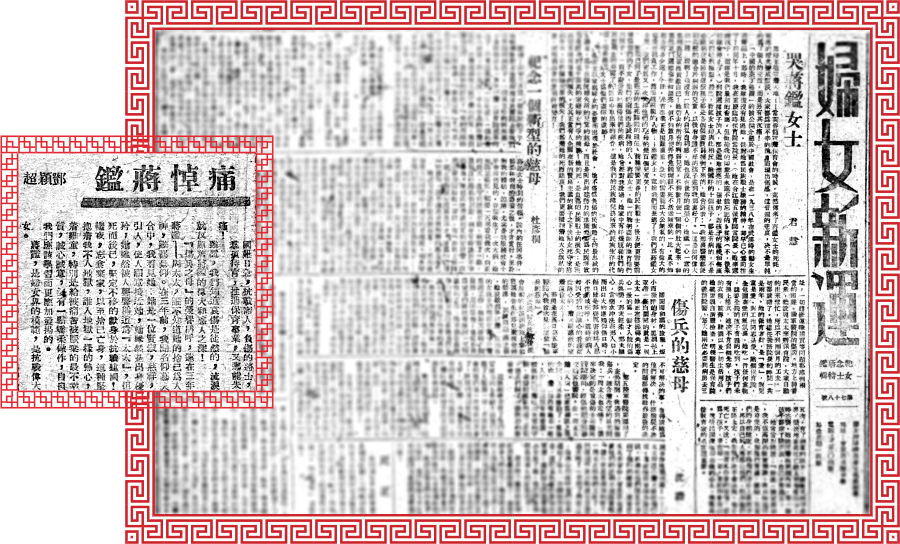
Large: The Central Daily News published special memorial issues in 1940.
Small: Ms. Deng Yingchao’s article in the Xinhua Daily's special memorial issue
The news of Jiang Jian’s death spread quickly. People from all walks of life felt an intense sorrow for her departure and paid their respects to this admirable nonpartisan woman. Among those who suffered the most were her students in the Fifth Sichuan Chapter Refugee School for losing their beloved “Mama.” The wounded warriors in the whole country organized memorial ceremonies and mourning rituals. The First Lady of the Republic of China Ms. Song Meiling—the President of the Chinese Wartime Refugee Childrenʼs Relief and Education Association (中国战时⼉童保育会)—sent condolences, so as the Association branch of the Shaan-Gan-Ning Border Region occupied by the Communist Party of China. The Association scheduled simultaneous memorial services to be held in all Refugee Schools in the nation on November 5th, 1940. Five days later, a public memorial service took place in Hejiang, where she passed away. Among the attendees was Ms. Liu Qingyang who represented the Association and delivered a eulogy. Soon after, people in the wartime capital Chongqing gathered together to attend the second public memorial service on November 20th. Ms. Song Meiling sent a horizontal biane as a gift for the service, on which four characters were written meaning “long live the spirit.” Major news media have published editorials, special issues, and articles of condolences, such as Central Daily News, Xinhua Daily, Xinshu News, Ta Kung Pao, and more. Many political and cultural elites have written memorial articles and songs for Jiang Jian, among whom were Ms. Deng Yingchao, General Feng Yuxiang, Mr. Zou Taofen, Ms. Shi Liang, Ms. An E, just to name a few.
-
